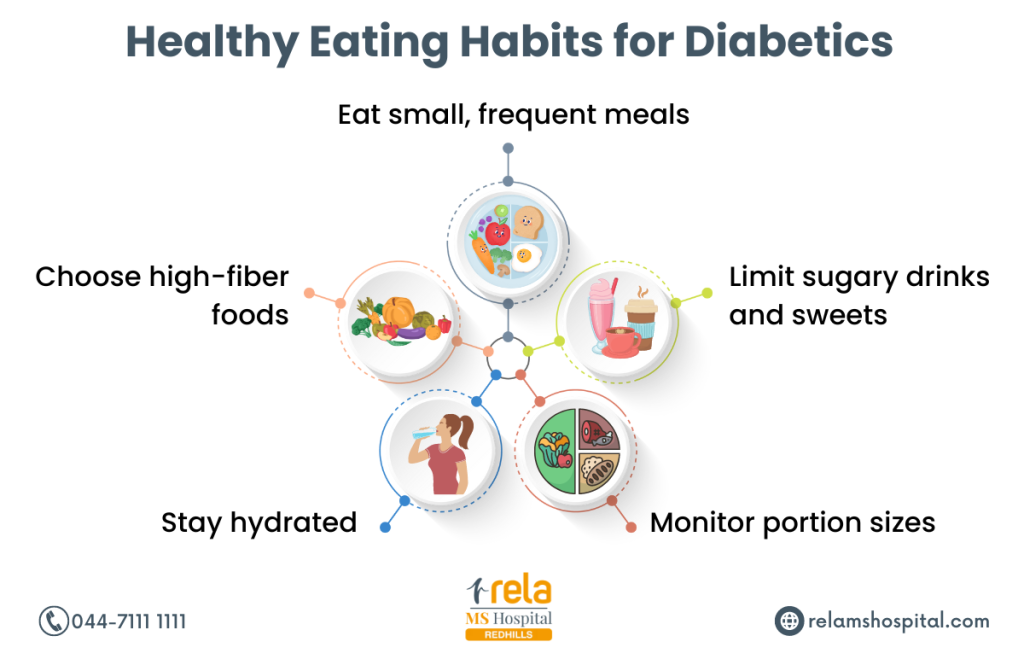Diet Chart for Diabetic Patients is crucial for managing diabetes effectively. This comprehensive guide aims to provide diabetic patients with a detailed and practical diet plan to maintain healthy blood sugar levels, improve overall health, and reduce the risk of complications associated with diabetes.
What is Diabetes?
Why is Meal Planning Important in a Diet Plan for Diabetic Patients?
How Do My Food Choices Affect My Blood Glucose Levels?
Diabetes Dangers: Exposing the Health Hazards
Uncontrolled diabetes can lead to severe health hazards. These include cardiovascular diseases, neuropathy (nerve damage), nephropathy (kidney damage), retinopathy (eye damage), and an increased risk of infections. Managing your diet is a critical step in minimizing these risks.
Diabetes Signs and Symptoms
Common signs and symptoms of diabetes include:
- Frequent urination
- Increased thirst
- Unexplained weight loss
- Extreme hunger
- Fatigue
- Blurred vision
- Slow-healing sores or frequent infections
Causes of Diabetes
Diabetes can be caused by genetic factors, environmental factors, and lifestyle choices. Type 1 diabetes is believed to result from an autoimmune reaction, while Type 2 diabetes is often linked to obesity, inactivity, and poor dietary habits. Gestational diabetes manifests during pregnancy and usually resolves following childbirth.

Things to Keep in Mind When Designing a Diabetes-Friendly Diet
When designing a diet chart for diabetic patients, it’s essential to focus on:
- Portion control to avoid overeating
- Meals that are well-rounded, comprising a combination of carbohydrates, protein, and fats.
- Low glycemic index (GI) foods that have a lesser impact on blood sugar levels
- High fiber intake to slow down the absorption of glucose
- Regular meal times to maintain consistent blood sugar levels
What Foods Can You Include in a Diet for People with Diabetes?
What Foods Should a Diabetic Avoid?
Precautions for Diabetics
Diabetics should take the following precautions:
- Monitor blood sugar levels regularly
- Maintain a healthy weight
- Exercise regularly
- Avoid smoking and excessive alcohol consumption
- Stay hydrated
- Consult with healthcare providers regularly
Meal Planning for Sugar Patients Diet Chart
Effective meal planning is a cornerstone of a diet chart for diabetic patients. Here are some tips:
- Breakfast: Start with high-fiber cereals, whole-grain toast, and a serving of fruit.
- uyuy7ed3Lunch: Include a portion of lean protein, whole grains, and plenty of vegetables.
- Dinner: Focus on lean protein, a moderate portion of carbohydrates, and a side of vegetables.
- Snacks: Choose healthy options like nuts, seeds, and low-fat yogurt.
Vegetarian Diet:
- Breakfast: Oatmeal with nuts and berries
- Lunch: Lentil soup with a side salad
- Dinner: Stir-fried vegetables with tofu and brown rice
- Snacks: Carrot sticks with hummus
Non-Vegetarian Diet:
- Breakfast: Spinach and whole-grain toast paired with scrambled eggs.
- Lunch: Grilled chicken salad with quinoa
- Dinner: Baked fish with steamed vegetables and sweet potato
- Snacks: Greek yogurt with a handful of nuts
Indian Diet Chart for Diabetic Patients
Here’s a detailed table outlining a balanced Indian diet chart for diabetic patients, focusing on nutritious meals that help maintain stable blood sugar levels.
| Meal | Time | Food Items |
| Early Morning | 6:30 AM | – 1 glass of lukewarm water with a dash of lemon |
| – 5-6 soaked almonds | ||
| Breakfast | 8:00 AM | – 2 Idlis with sambar |
| – 1 bowl of vegetable upma | ||
| – 1 cup, unsweetened green or black tea | ||
| Mid-Morning Snack | 10:30 AM | – 1 apple or 1 guava |
| – 1 glass of buttermilk | ||
| Lunch | 1:00 PM | – 1 cup of brown rice or 2 whole wheat rotis |
| – 1 cup of dal | ||
| – 1 cup of mixed vegetable curry | ||
| – 1 bowl of salad (cucumber, tomato, carrot) | ||
| – 1 bowl of curd | ||
| Evening Snack | 4:00 PM | – 1 cup of sprouts chaat or roasted chana |
| – 1 cup of unsweetened green tea or herbal tea | ||
| Dinner | 7:30 PM | – 2 whole wheat rotis or 1 cup of brown rice |
| – 1 cup of vegetable curry | ||
| – 1 cup of dal or chickpeas | ||
| – 1 bowl of mixed salad (lettuce, cucumber, tomato, onion) | ||
| Bedtime Snack | 9:30 PM | – 1 glass of warm milk (low-fat) |
Conclusion
Diet Chart for Diabetic Patients is fundamental for managing diabetes effectively. By carefully planning meals and making informed food choices, diabetic patients can maintain healthy blood sugar levels, improve their overall health, and reduce the risk of complications. A well-balanced diet that includes a variety of nutrient-rich foods and avoids those that can cause blood sugar spikes is essential. Consulting with healthcare providers and regularly monitoring blood sugar levels can help in maintaining optimal health. Adopting these dietary practices and precautions will lead to better management of diabetes and an improved quality of life.
Read also Kidney Specialist in Chennai





